Capacity Management, Conferences, Partners
Moviri and the Digitalization Era: 2014 BMC Engage Conference report
- By Moviri Team
07 Nov
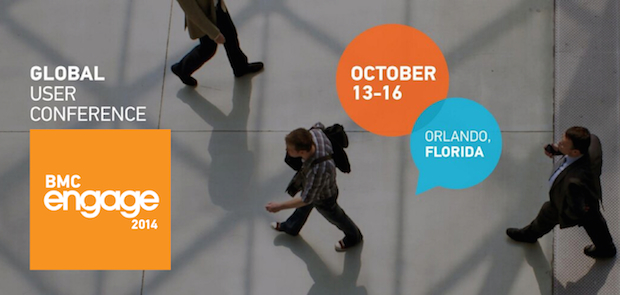
It was show time this October in Orlando for the 2014 BMC Engage Global User Conference
We were present at the event both as sponsors and as speakers, learning about and building upon the renewed and refreshed BMC value proposition (our partners introduced officially their new brand identity and logo), showcasing some of our success cases and strengthening relationships and developing a vision of the future with and among our customers.
Capacity Management took the spotlight in 4 customer-centered sessions. During each of them, Moviri’s role was highlighted, confirming our leading role as partner-of-choice in BMC’s Performance and Availability Ecosystem. Citrix, HCSC and Sanofi explained how they make sure to fulfill critical business initiatives with our help, while Northern Trust identified the supported integration with SCOM – provided by Moviri – as one of the key driver in the decision to adopt TrueSight Capacity Optimization.
The Digitalization Era and Disruptive Technologies
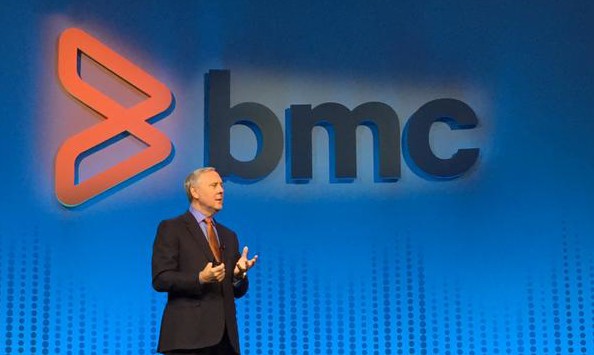
- Embracing a constantly growing holistic approach, expanding visibility beyond the the four walls of the Datacenter
- Unleashing and successfully leveraging the business opportunities coming from IoT, Cloud Computing and Big Data. While we’re approaching the Zettabyte of data milestone, the market is waiting for guidance on a renewed set of best practices to use in conjunction to “what it used to be”
- Consumerization, empowerment and automation. Architectures, hardware devices and applications keep becoming more and more powerful and complex – take for instance the spreading of Converged Architectures. It is critical to provide the market with automated, integrated, intuitive and robust solutions to ensure IT professionals spend time taking decisions rather than understanding how to tackle data.
Sanofi’s Transformation Journey
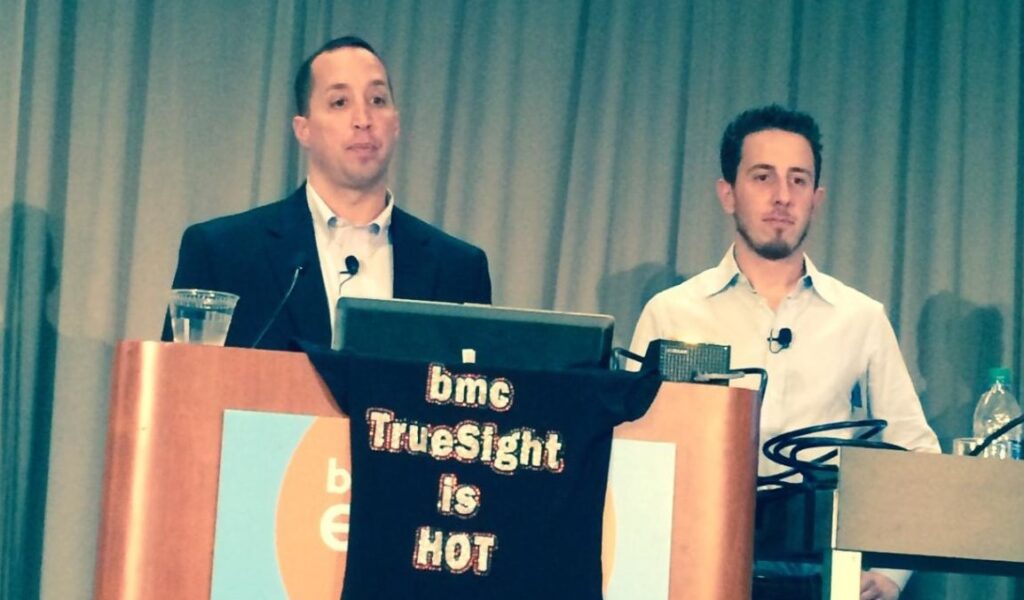
Chris Wimer, Sanofi Global Capacity Manager, and I talked about how Capacity Management supported the ambitious IT Transformation program of consolidation, harmonization and automation in line with Sanofi’s renewed business strategy.
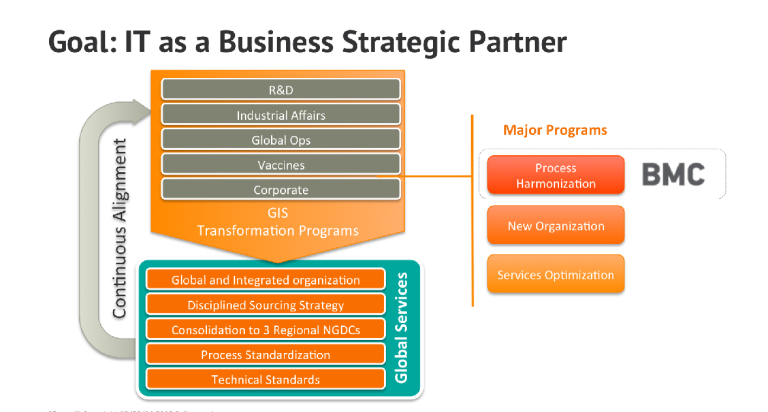
The key takeaways for the audience:
- Rely on experts — and the experts are Moviri. ☺
- Clearly define goals and challenges at the very start.
- Perform a rock-solid assessment and analysis of the as-is, identify KPIs to measure the effectiveness of the process, review and prioritize the available data sources…then start implementing.
- Think business-oriented: business value realization always comes first. That’s why processes and data streams need to be standardized, analytics need to be clear and accessible, areas of improvement must be measurable, priorities and service levels must be agreed upon.
- Be holistic: as we have shown, one of the key success factors has been the capability to centralize IT and Business information under the same roof
- Focus the reporting efforts on risk mitigation, provide improved visibility and reduce costs.
- Leverage business-aware analysis, understand IT services as a whole, report and optimize capacity in terms of actual and predicted business demand… and make it all work by taking advantage of Splunk and Moviri’s connector for TrueSight Capacity Optimization!
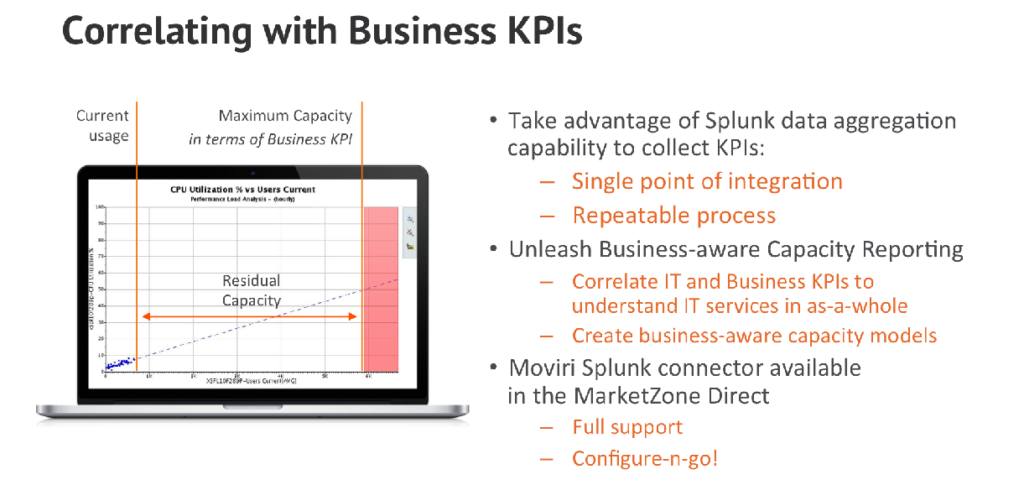
Accounting and Chargeback at Citrix...
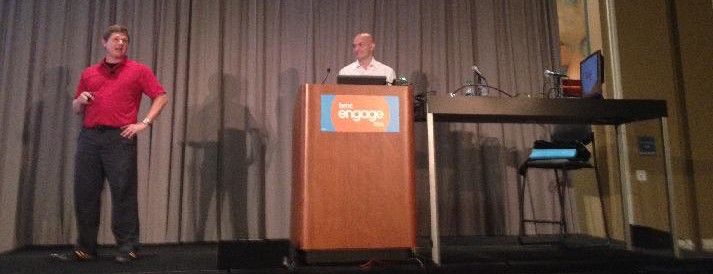
Troy Hall, Citrix Senior Business Analyst, and Moviri’s Renato Bonomini took the lead sharing best practices and recommendations on how to set up an effective Accounting and Chargeback (ACB) process with TrueSight Capacity Optimization.
One of Renato’s quotes stood out: “Not all servers were created equal”. With that he referred to the business value of performing ACB and achieve improved cost visibility, making sure to have a fair allocation and showback of costs and resources.
As Renato explained, any ACB process is made up by 3 components:
- Identify the costs, which is usually the most painful point – as confirmed by Troy – since reliable data is generally not available and needs to be estimated.
- Allocate costs, choosing from a variety of possible models taking in account KPIs such as Simplicity, Fairness, Predictability, Controllability, Complexity.
- Chargeback costs to the final consumer.
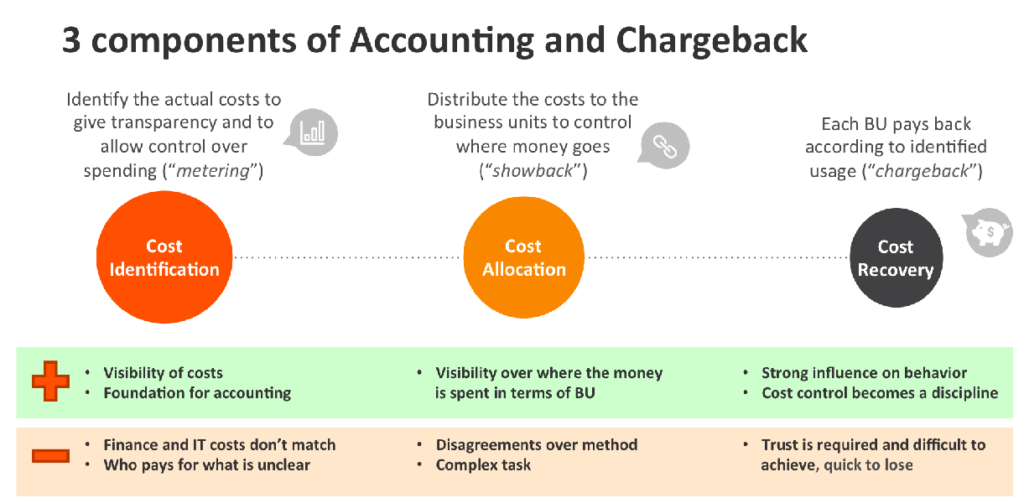
- Start with a model that makes sense considering the state-of-art information.
- Run the analysis, check results and evaluate deviations from expectations.
- Adjust cost rates and allocation models, working closely with finance.
- Re-iterate the process.
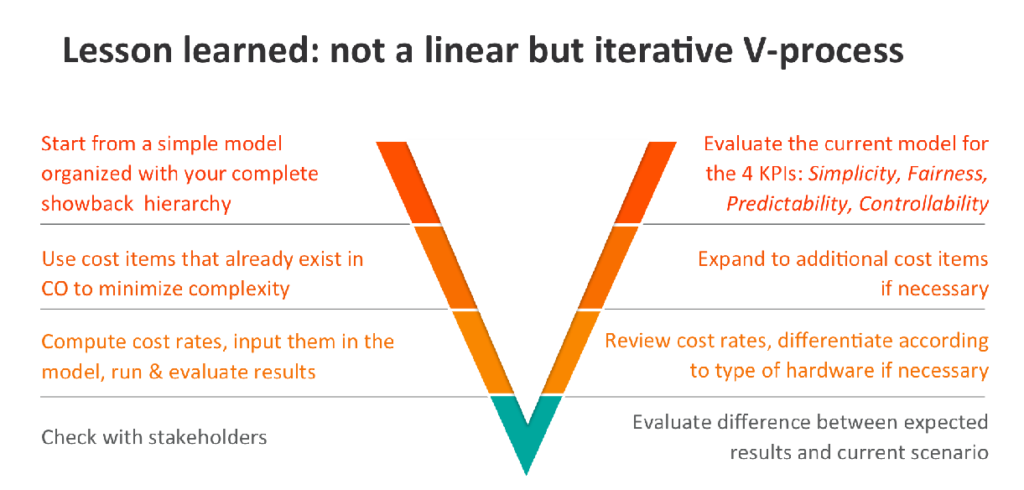
Troy outlined the most important positive outcomes in adopting ACB:
- Increased satisfaction of business units, more educated IT decisions.
- Resources are freed up and reallocated to more critical business objectives.
- Ability to quickly reconfigure models and automatically generate auditable results.
- The effort required for monthly showback reporting is minimal, saving precious time and providing detail for even greater IT resources savings.
... And again ACB in HCSC!
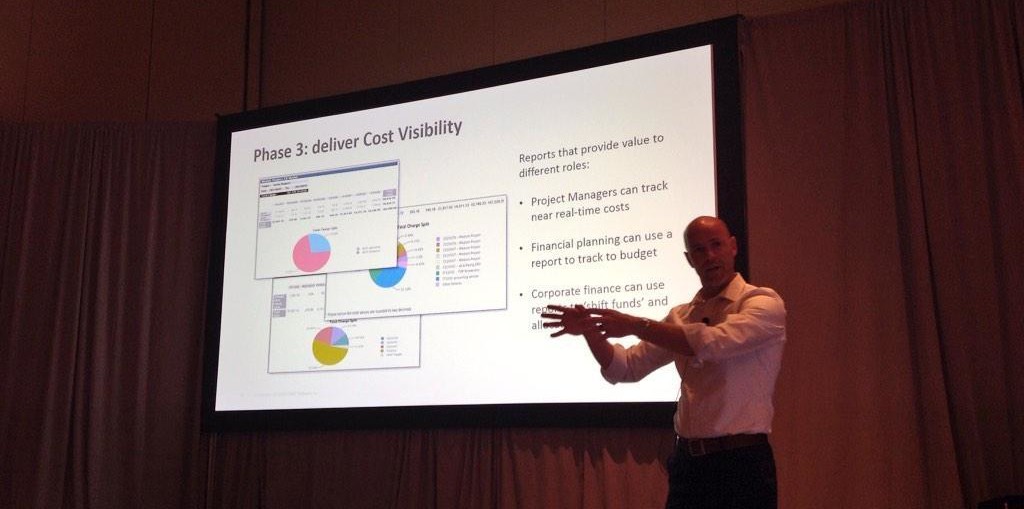
Rick focused on the need to drive competitive advantage via efficiencies and cost-effectiveness through IT optimization, simplification, and agile infrastructure & applications, closing his remarks with some figures about the results.
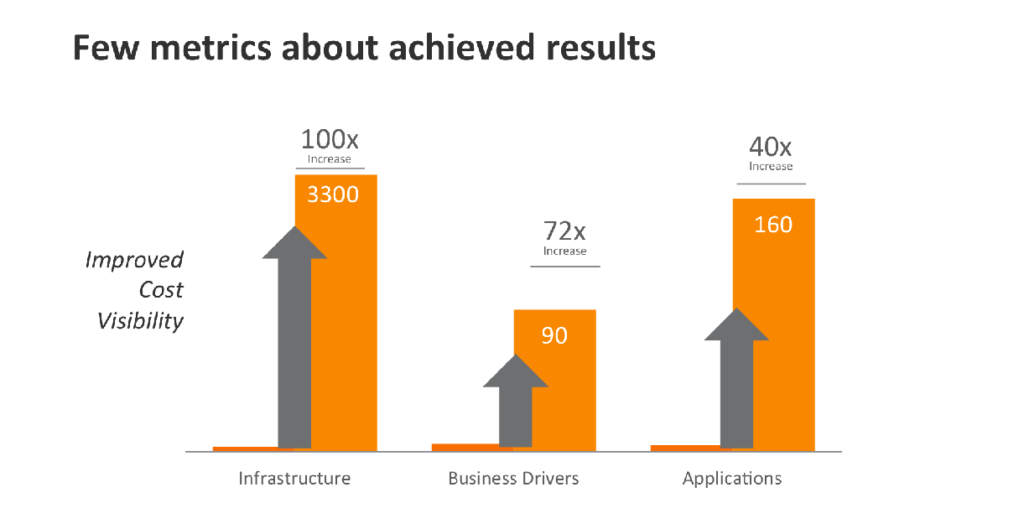
Ben delighted the audience with some real-life success tips. The concept of “useful, consistent lie” resonated in particular with the audience, as Ben’s way to explain that it’s wrong to expect to earn value from ACB only when perfect cost models are in place. The iterative-V approach – accept inaccuracy, but be more consistent and useful after each iteration – is the most sensible choice.
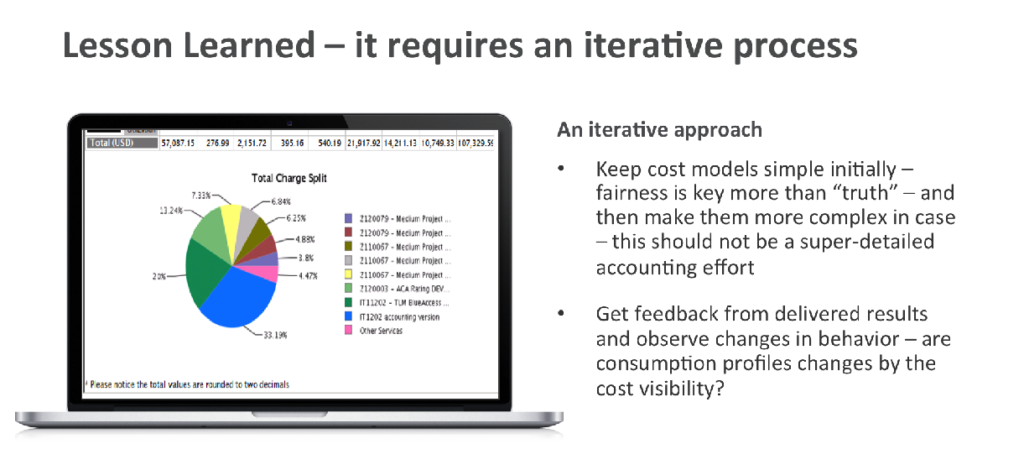
End even if we did not have the chance to present together, Ben took his time to give Moviri some credit and depict his experience working with us. Here’s a couple of quotes:
If smart were sexy, and it is, the Moviri guys would be super models. […] The best capacity results come from Moviri, BMC, then Moviri, Moviri, Moviri, Moviri.
Ben Davies, Senior IT Business Consultant at HCSC
Hadoop Capacity, SAP Hana and More
Engage has not only been about conference sessions, but also and more importantly, about welcoming IT professionals at our booth, discussing about Performance & Availability and presenting our solutions, some of which we announced and premiered at Engage. The hottest topics have been:
- New connectors for TrueSight Capacity Optimization: we are working on complete solutions – integrations and reports – for two of the most important platforms available in the market: Hadoop Cloudera and SAP Hana.
- Moviri Managed BCO: our managed service offering for BMC Capacity Optimization (BCO) customers designed to maximize the return on their BCO investment.
Let me recall the seed of an idea I started this post with: the Digitalization Era and Disruptive Technologies. Well, we believe Hadoop can play a relevant role in the emerging market of Big Data. Of course as a source of data; but especially for capacity managers also as a service that needs to be planned, optimized and aligned to real business demands.
We’ve seen a few proposals of Hadoop capacity analysis best practices being published on the web during the last few months, and our feeling has frankly been that “this is not quite enough… we could do way better” – again, quite: we also had outstanding conversations!
Engage gave us the chance to announce our intent to take it to the next level. To us, a capacity analysis has always meant more than reporting on “how much CPU I’m using and how the trend looks like”. How about dependencies and correlations? How about achieving an understanding of the true causes of resource consumption? How about being effective in identifying both hardware and software bottlenecks using a holistic approach? How about proactively planning based on actual demand information, rather than trending data?
It surely sound ambitious: that’s why we’ve been so excited in hearing so much good feedback on what we’ve shown, and we’re thrilled that many customers have agreed to help us moving forward by working together on a trial version of the final product, to test and refine our intuitions and use-case design on the field.
Want to know more or join us? Let’s Engage!
Comments are closed.
Categories
- Akamas
- Analytics
- Announcements
- Arduino
- Big Data
- Capacity Management
- Cleafy
- Cloud
- Conferences
- ContentWise
- Corporate
- Cybersecurity
- Data Science
- Digital Optimization
- Digital Performance Management
- Fashion
- IoT
- IT Governance and Strategy
- IT Operations Management
- Life at Moviri
- Machine Learning
- Moviri
- News
- Operational Intelligence
- Partners
- Performance Engineering
- Performance Optimization
- Tech Tips
- Virtualization
Stay up to date

© 2022 Moviri S.p.A.
Via Schiaffino 11
20158 Milano, Italy
P. IVA IT13187610152
1 Comment